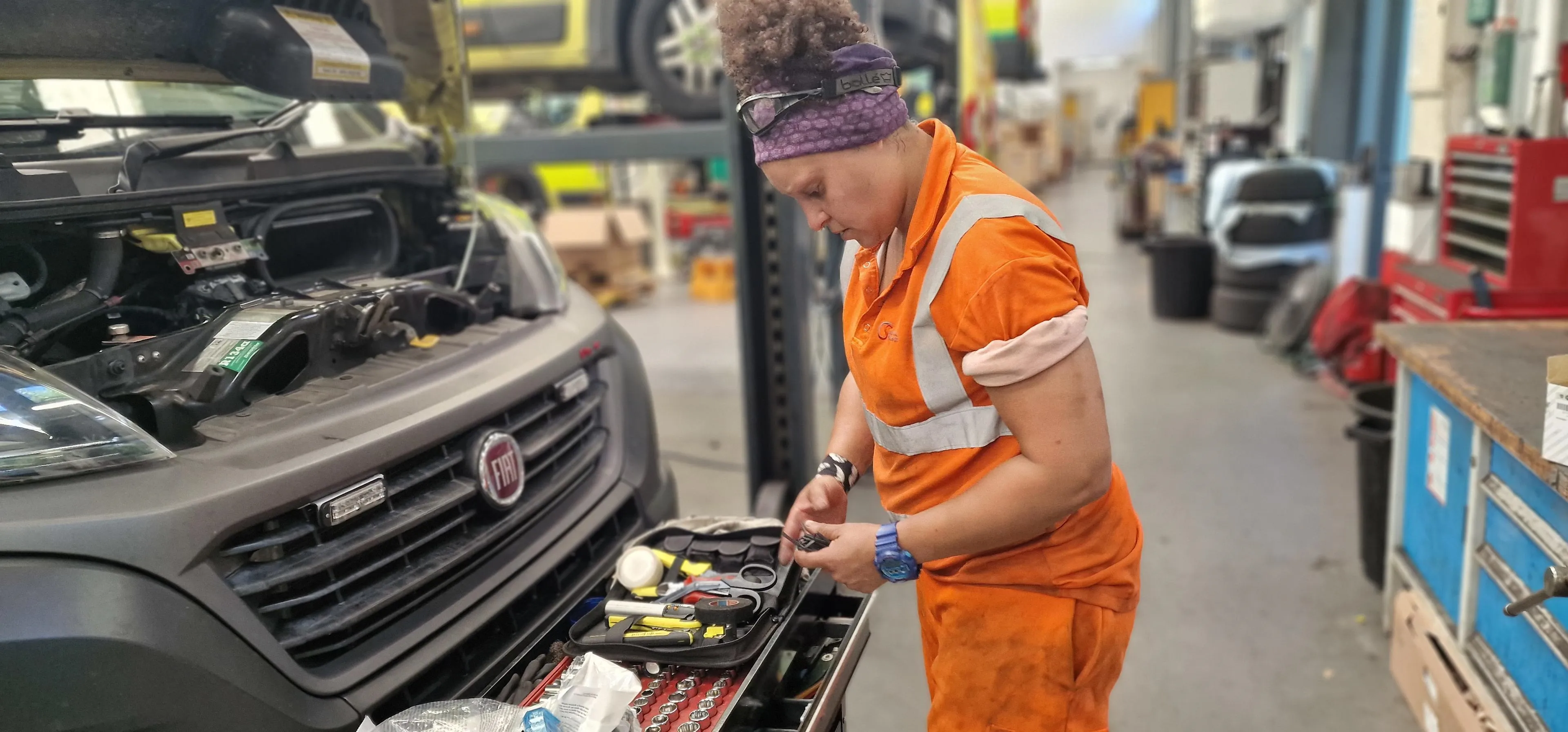Ordnance Survey supports ground-breaking trial to maximise the efficiency of ambulance fleets
The new trial is being run by South Central Ambulance Service
Press Office
South Central Ambulance Service NHS Foundation Trust (SCAS) – operating across Berkshire, Buckinghamshire, Hampshire, and Oxfordshire – has a fleet of over 300 vehicles which are almost 99% deployed at any time. Available NHS funding dictates a finite number of ambulances in the fleet, with new, fully equipped vehicles costing around £200,000 on-the-road each. Therefore, the priority for the trust is to maximise the efficiency of each ambulance.
To ensure life-saving support is available, it is vital to the trust that its ambulance fleet is well maintained and reliable. SCAS has been looking at ways to maximise efficiency by minimising those times when ambulances must be taken off road for unforeseen maintenance.

Based on a methodology already seen in the aviation industry, SCAS - with the help of OS, data integration, analytics, and AI company Qlik and Differentia Consulting (an elite Qlik channel partner) - is developing a predictive maintenance model for its vehicles. The model will allow the trust to efficiently schedule maintenance before a vehicle succumbs to larger, possibly long-term failures.
Each ambulance contains two telematics trackers:
- The engine tracker, monitoring internals such as engine temperature and clutch usage, monitoring location, lights, and other electricals.
- The cab tracker linked to the 999-control room.
SCAS then looked at building a model to achieve new insight, which was both analytical – monitoring telemetry and the state of vehicles returning from shifts – and predictive, considering the probability of an ambulance needing servicing.
"As well as the purchasing, conversion, and equipment costs to get each ambulance on the road, it takes 12 members of staff to cover each vehicle’s weekly operational rota, all with their own associated recruitment, training, and university costs. Looking for other ways to innovate and improve service delivery and patient experience has led us to consider the wealth of data we capture from our vehicles. I am really excited to see what story we will be able to tell from the data and the impact this can have. The help we are being offered by working collaboratively with OS, Qlik, and Differentia is amazing; they are a key part of our analytical journey, providing the insight and expertise that we do not have."
OS has been tasked with combining this telematics data with geospatial data – specifically, the topographic and contextual data in the OS National Geographic Database – which can unlock new analytics on how road and journey characteristics could influence wear on a vehicle. SCAS first asked OS to take telematics data for the whole fleet and map journeys, observing the road types, average speeds, gradient, sinuosity (the curvature of the road), and rural vs urban nature of the routes being taken.
Factors such as driving uphill can cause the engine to overheat, leading to significant strain on the engine components. Other considerations are the effects of harsh braking and acceleration on vehicles. Another question is whether there are any junctions where vehicles experience greater stress. By combining geospatial data with maintenance data, SCAS can build a predictive model to answer these questions.
James Armstrong, Geospatial Consultant at OS said:
“Ambulance services are already dedicated users of OS geospatial data, but it’s exciting to know that applying our data to this new model has great potential to improve the efficiency of the SCAS fleet, ultimately enhancing its ability to provide urgent care to those in need. It’s incredibly rewarding for OS to be part of this project and potentially help to apply it across other emergency service fleets longer term."
Anyone interested in contacting SCAS should follow the contact details on its website - South Central Ambulance Service | Hampshire, Berkshire, Oxfordshire and Buckinghamshire.
Sharing the latest news about OS. We can license you to use OS maps in print, online and film format. For more information and resources for journalists, bloggers and media professionals, email pressoffice@os.uk or call 023 8005 5565.
Using geospatial data and services to support a resilient Britain
Police, Fire and Ambulance, or blue light services, are the key members to our resilience community and through the Public Sector Geospatial Agreement (PSGA) they use a range of OS data to help keep our communities safe.